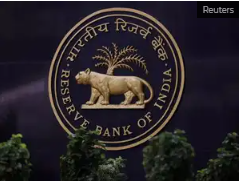
April 9, 2025 |Gurugram: In a significant monetary policy decision, the Reserve Bank of India (RBI) has reduced the repo rate from 6.25% to 6%, signaling a continued accommodative stance aimed at fueling economic recovery. This move is widely expected to have a ripple effect across sectors, with the real estate industry emerging as a key beneficiary.
The reduction in the repo rate — the rate at which the RBI lends money to commercial banks — directly influences lending rates offered by banks and financial institutions. For the real estate sector, particularly the affordable and mid-segment housing markets, this development could not have come at a more opportune moment.
Industry stakeholders have welcomed the decision, emphasizing its potential to lower EMIs for homebuyers and boost overall housing demand.
Vikas Garg, Joint Managing Director, Ganga Realty, hailed the move as “progressive” and noted its likely impact on home loan borrowers and market sentiment. “The RBI’s decision to reduce the repo rate to 6.00% is a progressive move that will significantly strengthen the position of home loan borrowers by reducing EMIs and improving affordability. This move, aligned with an accommodative stance, sends a strong signal of support for economic revival and will undoubtedly boost consumer sentiment,” he said.He added that the cut would particularly benefit the affordable and mid-segment housing categories. “This is a timely catalyst that can trigger increased demand and investment. The rate cut, coupled with improved liquidity, will accelerate housing uptake and contribute meaningfully to the sector’s growth momentum,” Garg emphasized.Echoing similar sentiments, Saransh Trehan, Managing Director, Trehan Group, described the RBI’s decision as “strategic” and “welcome.” He pointed out that the move would positively impact homebuyers and developers alike. “Lower borrowing costs will directly benefit homebuyers by making loans more affordable, thereby improving demand across residential segments. This reduction, especially in the current economic climate, will act as a strong enabler for both end-users and investors,” Trehan noted.He also highlighted the potential for growth in Tier 2 and Tier 3 cities. “We anticipate a boost in sales momentum, particularly in Tier 2 and Tier 3 cities, where affordability and value-driven housing are key drivers. The move also reflects the central bank’s commitment to sustaining growth and maintaining liquidity—critical factors for the continued revival and expansion of the real estate industry,” he said.
As banks are expected to gradually pass on the benefit of the reduced repo rate to consumers through lower interest rates on home loans, the real estate market may see renewed buyer interest and investment activity in the months ahead.
With macroeconomic indicators showing signs of improvement and inflation staying within acceptable limits, the central bank’s decision underscores its confidence in supporting economic growth. For the real estate industry — often seen as a bellwether for economic sentiment — this could mark the beginning of a more robust phase of recovery and expansion.
